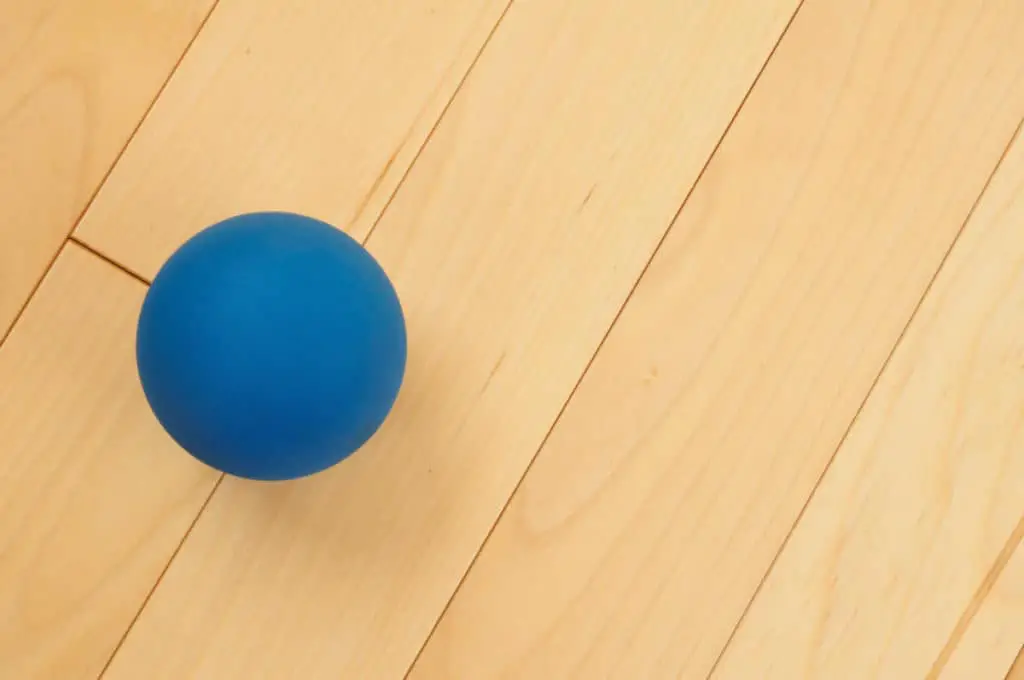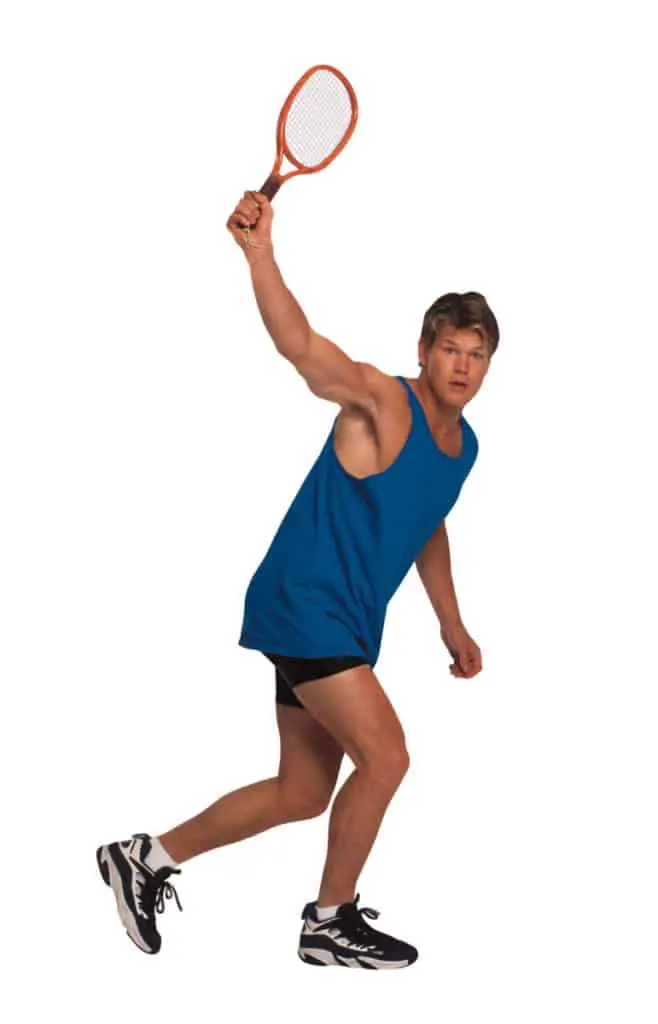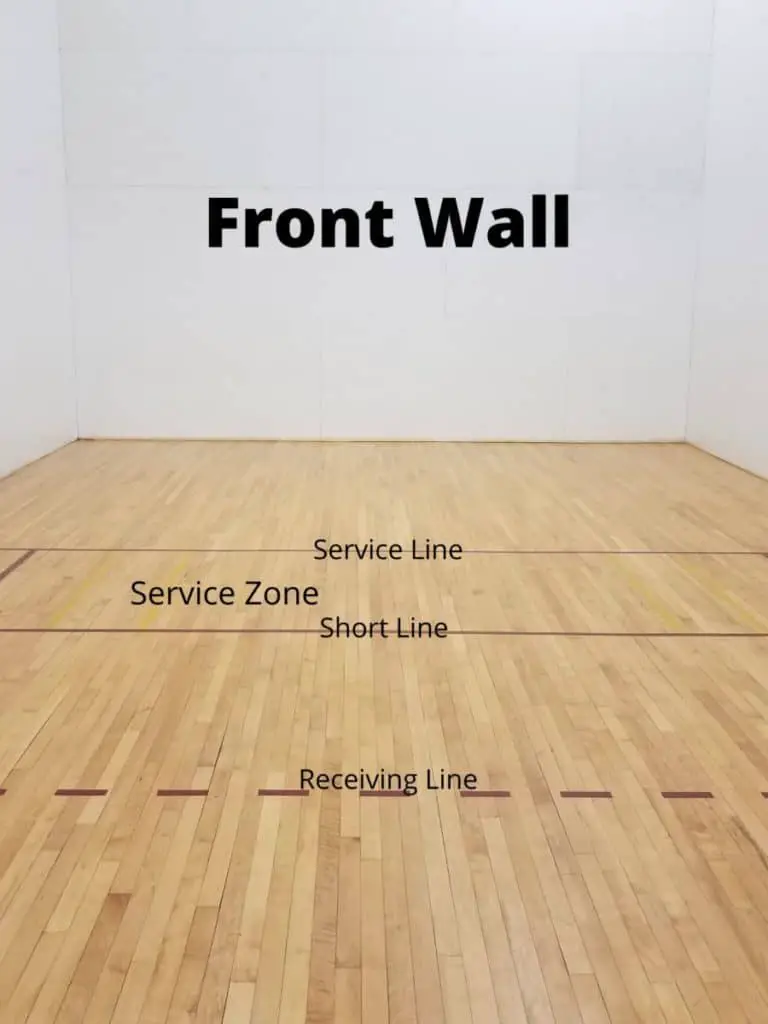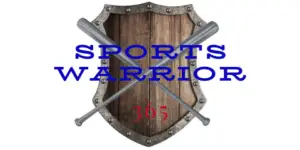Racquetball can be a fun and amazing sport for people of all ages. It reached its peak of popularity in the 1960’s and 1970’s and we are fortunate that there are many courts throughout different parts of the world.
The fast paced, high energy game provides competition and an excellent workout. At sportswarrior365, during the winter months we play racquetball several days a week and truly love the game. It provides a time to compete, burn major calories and to have great fun.
Below we have a comprehensive look and provide all of the information you need to get started in racquetball or to take your game to the next level.
We hope that you find your sport to keep you energized, healthy and competing in sports and games that we loved growing up. Sports and competing remain a vital part to the lives of many adults and kids (7 reasons kids should play sports) of all ages are competing and learning frequently.
We learn a lot about ourselves both physically and mentally when we have a chance to compete and have fun. Racquetball is another fine example of a game that we can all enjoy and hopefully the information below is helpful and can get you started with a wonderful game and an even better workout.

Topics for Racquetball 101 include:
- History of Racquetball
- Getting started in Racquetball
- Racquetball Gear and Accessories
- How to Play Racquetball and Rules
- Formats in Racquetball
- Strategy in Racquetball
- Staying Safe in Racquetball
- Major Competitions
- Tips and Videos
- Related Questions
- Take Action
History of Racquetball
Joseph G. Sobek is credited with creating modern day racquetball. He was a tennis, squash and handball player that was seeking a fast pace game. He was working at a rubber factory when he created the first version of a racquetball.
He decided to combine the rules of squash and handball to create the rules for racquetball. In 1952, he founded the Paddle Racquet association and set the rules of the games to the YMCA’s throughout the country. By the late 1960’s the game reached a high level of popularity.
In 1969, the first official championship was held in St. Louis, Missouri. Over the years, there were many versions of racquets and paddles and sporting goods stores starting selling these products. The attraction to the game has always been the fast paced, high sweating activity that you get from playing the game.
The game is still played in over 95 countries by over 20 million people. It reached a high level of popularity with the Pan American games adding it as a competition. The court dimensions in America are 40×20, but these sizes can range throughout different parts of the world.
Getting Started in Racquetball
If the game sounds attractive to you, it is easy to get started in the game of racquetball. There are courts throughout 95 different countries in the world. Many fitness centers, college campuses and YMCA’s have courts available to play.
I recall back in the 1990’s at my local YMCA starting to play the game, but often having to compete and sign up for a court up to a week in advance. There were four courts and they were packed daily.
There are some simple equipment or accessories that are needed, but for a low cost you can get started in a game that is a great deal of fun and an amazing workout.

Racquetball Gear and Accessories
It is simple to get started in the game. Let’s start with what gear and accessories are needed. Here is a brief list with some further details and recommendations below:
- Racquetball
- Racquetball Balls
- Shoes
- Protective EyeWear
- Glove (Optional)
- SweatBand (Optional)
The Racquet
The racquet has increased in size over the years and is still relatively inexpensive for a beginner level of racquet. You can pick up a racquet at many local sporting goods stores or purchase one online. We would recommend the beginner starting with an entry level racquet. Racquets are sold in different swing weights that include the following:
- Slow Swing – Heavy Weight Racquet
- Moderate Swing – Medium Weight Racquet
- Fast Swing – Light Weight Racquet
Low Price End: We would recommend the Wilson Striker Racquet. This is a great racquet for the price at the recreation level. Check price here.

Racquetballs
Racquetballs are made in different colors. We prefer to the blue racquetballs. Here is a great deal for your money. Check price here.

Shoes
You do not need a specific pair of racquetball shoes to start the game. Any solid pair of shoes that are clean on the bottom and provide propry ankle support can work. Once you advance in the game of if you want a specific pair, we would recommend the shoes pictured below. Check price here.

Protective Eyewear
Some players like to think they do not need protective eyewear, but we think that is foolish. I wouldn’t play without protective eyewear. Your eyesight is important to your future and you need to protect your eyes. Yes, they can be uncomofrtable and getting sweaty, but it is better than losing your eyesight.
- Here is a low entry price pair, check price here.
- Here is a higher end pair, check price here.
Optional Items – Racquetball Glove and Sweatband
With the amount of sweat that takes place during racquetball, a glove and a sweatband are two extra products you can add as an important accessories. They can make the game more comfortable and help you perform at a higher level. Here are the two recommendations we would make for these products.
Glove, check price here.
Sweatband, check price here.
How To Play Racquetball and Rules
Now that you are all set with the equipment and accessories that will help you have fun and burn some calories. Let’s provide a basic overview of the game.
The game starts with someone hitting a serve. The ball must be bounced and then hit by the player off of the front ball. The ball must land behind the service line and then hit by the opponent before it bounces twice. The ball cannot hit the back wall or hit three walls before it hits the ground on the serve.
The players compete back and forth, once the ball hits the ground twice before being struck or if the player fails to hit the front wall before it hits the ground, a point is earned if the person serving was successful or a sideout occurs if the person wins the rally that was receiving the serve.
Scoring only takes place when the person serving wins the rally. The game happens quickly as the ball travels fast and the action is quick. The game is played to 15 and once again points can only be earned by the person serving.
This can cause the game to take some significant time, even through the person serving should be able to set themselves up to have the advantage in the point.

Important Rules of Racquetball:
- Some of the basics include:
- The ball cannot hit the ground twice before the player returns a shot to the front wall.
- The shot must not hit the ground prior to the front wall, but the ball can hit other walls on the court.
- Points can only be scored by the person serving. When the receiver breaks the serve, he or she now has the opportunity to serve and score points.
- The serve cannot hit three walls prior to hitting the ground beyond the short line.
- The serve must first hit the front hall before hitting anything else.
- The serve cannot hit the back wall prior to hitting the ground between the short line and the back wall.
- The server receives a 2nd serve if the first serve is a fault.
- If the 2nd serve is a fault, there is a side out.
- A hinder can be called if obstruction of the ball or a players effort to get to the ball occurs. Typically this results in a replay of the point.
For a compelte overivew of how to play, visit our post: How to Play Racquetball (overview, rules and tips)
Formats in Racquetball
The game of racquetball can be played in numerous formats. One of the major benefits is that it can be played with anywhere from 2 to 4 people. THere is even a game for 3 people, which is quite fun. Here are the different formats:
- 1 v 1
- 2 v 2
- Cutthroat
1 v 1:
This is pretty simple. One person plays against the other person. It is the most simple format of racquetball and easy to understand. The two opponents play against each other and alternate hitting shots. The 40×20 court stays pretty open and a great workout is achieved.
2 v 2:
Now the court is getting more crowded, but with the right care and safety, the game can be just as fun. When one team is serving, the non serving team members stands in the service area to the side. THe teams alternate hitting shots and play it out. Either person from the team can hit the shot. Typically, the players each work off of each other and cover a side of the court. They work forward and back and must communicate to be successful.
Cutthroat:
A fun and exciting game if you have three people that want to play. The person service is competing against 2 people. So pretty much you have a 1 on 2 situation in order to score a point. This game can take a long time because it is difficult to serve.
The ace serve becomes important for scoring points. Another version of cutthroat that I have played is that only two people are competing at a time. The third person stands in a back corner and attempts to stay out of the way. If player 1 is playing against player 2 and scores a point serving, player 3 now steps in and competes against player 1.
If player 3 is successful beating player 1 on that serve, he or she now becomes the server and player 2 is receiving the serve. It is a great way to involve three people without the court feeling overly crowded.
There are some people hesitant to play more than 1 on 1 because of safety concerns.
Strategy in Racquetball
- Learn to serve a high level
- Stay towards the middle of the court
- Learn the lob shot
- Perfect your roll out shot
- Be able to hit a quality backhand shot
- Use the walls to your advantage
- Read your opponent – Find their weakness
For tips on each of these 7 categories, visit our post, here.
Staying Safe in Racquetball
While we are having fun, competing and getting a great workout, we want to stay safe while we play. Nobody wants to go home having been hit by a racquet or getting hit by the ball. There are some tips you can use to make sure you stay safe and play your role in keeping your opponent safe.
Tip 1 – Court Awarneess
Be aware of where you are on the court. Yes, you want to stay towards the middle of the court, but make sure you are not in the direct line of where your opponent will hit the shot if they are behind you.
Too often a player camps int he middle of the court and can take a ball to their back if they are blocking the path. You don’t want a welt on the back of your head or back. Stay safe and be aware of where your opponent is or be read to jump.
Tip 2 – Your Swing
Be aware of your follow through. Yes, your opponent should not be close to you when you are hitting, but the reality is that as you chase and run for a ball, a big follow through might catch your opponent. At the recreational level, safety is a major priority and we don’t ever want to hit someone intentionally and we would rather lose a point then to hurt someone.
Tip 3 – Hinder Rules
Be aware of the hinder rules. These are put into place to keep people safe and to keep the game fair. Here is a list of the different hinder calls:
- Court Hinders – When the ball takes an irregular cbounce when hitting a rough surface such as a light.
- Ball Hits Opponent – When the ball hits an opponent when in flight. This can be consdiered a replay or a point depending on if the opponent was in an avoidable position.
- Body Contact – When your opponnent is in the way and you must stop to avoid injury. Contact with a racquet to the body on the follow through is typically not considered a hinder.
- Screen Ball – When a ball off the wall comes very clsoe to the perosn who just hit the ball preventing the opponent a fair chance to hit the ball.
- Backswing Hinder – When the backswing of a player is obstructed by the opponent.
- Safety Holup – If a player feels that they will hit their opponent they holdup and don’t hit the shot. This must be called immediately. Once again, safety is the priority here.
- Other Interference – An example of this is if a ball from another court enters the court where the game is taking place.
Major Competitions
- US Open – This is held annually in the month of October.
- Pan American Games
- World Games
- Central American and Caribbean Games
- Asian Championships
- European Championships
- Pan American Championships
Tips and Videos
Here are some excellent tips and videos to help you begin the game or to take your game to the next level. With a lack of racquetball coaches in your area, youtube is a great place to turn to to learn more about the game and to learn some strategy.
I enjoy watching the best of the best play on youtube and truly appreciate their power, speed, and ability to place shots. The serves they hit are incredible and are worth checking out. Here are some of our favorite tips videos and game action videos:
Racquetball Serving:
The Splat Shot:
The Backhand in Racquetball
Three Things to Avoid
Racquetball: Pan Am Championship
Related Questions
How many calories would I burn during racquetball?
You can burn up to 800 calories an hour playing racquetball. This is dependent on the maount of movement and yoru current body weight. For a complete overivew of how good of a workout racqueball is, visit our post here.
Can you play racquetball alone?
You can probably get a decent workout and work on different shots, but the most fun part is the competition and trying to read and respond to what your opponent is doing. While a decent option, the real fun takes place with playing against others in the different formats discussed above.
How many chances do you get to serve?
If the first serve is a fault, the server gets one additional serve. Some of the reasons for a fault is a shot that is short, too long or hits three walls. The ball ust hit beyond the service line, but before it hits the backwall.
Can I use my tennis racket?
No, you should use a racquetball racquet. THe tennis racquet has different strings and could lead to a safety issue.
Do you use spin in racquetball?
Unlike tennis, the ability to spin the ball is reduced due to the rubber that the ball is made of. While some spin can have an impact, you don’t see the major top spin and backspin that occurs in tennis.
Overall it is a different motion and a more sweeping motion when hitting the ball. The lower you can catch the ball to the ground, the better chance of ball returning out low once it hits the back wall, thus reducing the opportunity for your opponent to return the shot.
How many steps in racquetball?
I actually tracked my last several matches in racquetball using my vivoactive 3 garmin watch. I played for around 50 minutes each time and ran a total distance of 3.0 miles, which is right around 6,000 steps.
So if you played close to an hour, chances are you will exceed over 6,000 steps in that hour while burning close to 800 calories. Not a bad workout at all! Plus, you will leave feeling good about yourself and the fun that you had!
How many bounces in racquetball?
The ball can only bounce once before you hit the ball form an opponent and cannot bounce at all after your hit the ball and befoe it hits the front wall. You can use the side wall, back wall or even the celing prior to the ball hitting the front wall, but it cannot hit the ground.
How many points in racquetball?
Games are played to 15 points. The winner only has to win by one point. Occasionally, if time is limited on our last game, we will play to 11 points. In cutthroat, due to the difficulty of serving, you may only play to 7. Some players may want to play win by two, but tournaments are played first perosn to 15, even if only by one point.
How many games to 15 points?
It is a best of 3 series. If each player wins one of the first two games and the match is tied at one game a piece, then the third game is played to only 11 and is considered the tie breaker.
What are the different types of serves in racquetball?
You have three common serves, these include: the power serve, the lob, and the zee shot. The power serve is hit with power and is low to the ground, the lob shot is used to try to get your opponent in the back corner and the zee shot hits two walls and sometimes a third wall after the ball bounces. This serve can leave some strange spin and often puts an opponent in the back corner.
Take Action…
Are you ready to get started? Go ahead and buy some gear and let’s get started. Check out our instructional videos and find someone to play with. You won’t regret getting started in this wonderful game. The workouts are amazing and competing is a blast.
Let’s get off that couch and get back into shape playing a game that is a great deal of fun! Make sure you check out our other racquetball posts, here.
